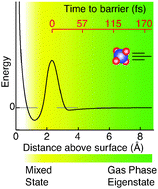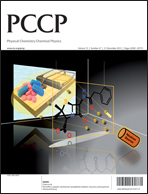On the origin of mode- and bond-selectivity in vibrationally mediated reactions on surfaces
Abstract
The experimental observations of vibrational mode- and bond-selective chemistry at the gas–surface interface indicate that energy redistribution within the reaction complex is not statistical on the timescale of reaction. Such behavior is a key prerequisite for efforts to use selective vibrational excitation to control chemistry at the technologically important gas–surface interface. This paper outlines a framework for understanding the origin of non-statistical reactivity on surfaces. The model focuses on the kinetic competition between intramolecular vibrational energy redistribution (IVR) within the reaction complex, which in the long-time limit leads to statistical behavior, and quenching, scattering, or desorption processes that restrict the extent of IVR prior to reaction. Characteristic timescales for these processes drawn from studies of vibrational energy flow dynamics on surfaces and in the gas and condensed phases suggest that IVR is severely limited for important classes of surface reactions. Under these conditions, selective vibrational excitation can lead to preferential transition state access and result in mode- or bond-selective chemistry, even at high collision energies above the barrier to reaction. In addition to providing a basis for understanding experimental observations, the model provides guidance for identifying other gas–surface reactions that may exhibit mode-selective behavior.


 Please wait while we load your content...
Please wait while we load your content...